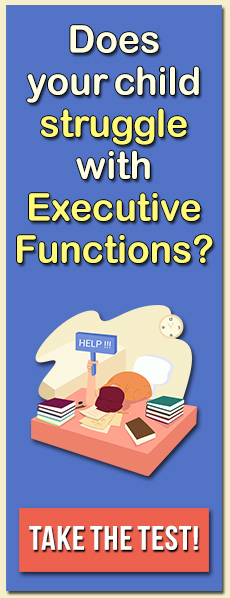Kids with slow processing speed are often identified by their teachers and parents as kids who just don’t try as hard. This is understandable. Kids with slow processing speed appear to be less motivated than their peers.
But consider the difficulty of motivating children whose friends finish their homework in 20 minutes and are still outside waiting for them to get done an hour later. Imagine the frustration and resentment kids with slow processing speed experience when completing chores that feel endless to them but that their siblings complete in no time.
Kids with slow processing speed can be easily distracted (often true for kids also diagnosed with ADHD), and slow to engage in the basic tasks of home and school. These kids may not display an appropriate sense of urgency to complete their schoolwork, and may even have “time blindness,” making them oblivious to the passage of time or how long something might take to do. They often lack the skills to be efficient and manage multiple demands.
Middle and high school kids with slow processing speed and executive-functioning difficulties know they have to work longer and harder than many of their peers, leading to a lowered sense of self-esteem for many of these students. It is not uncommon for them to resign themselves to always being behind; they may not try as hard as they did when they were younger.
The brains of kids with slow processing speed may work differently. Their neurotransmitters may not target reward centers the way their peers’ brains do. Studies have demonstrated decreased function in the brain dopamine reward pathway in individuals with ADHD, which is commonly seen in kids with slow processing speed and executive-functioning difficulties. As a result, the biological drivers that facilitate processing speed in others may be lacking in kids with slow processing speed. Kids with ADHD (60% of whom display slow processing speed) appear to produce less dopamine in their brains for boring tasks than their non-ADHD peers, though the same amounts are present for more engaging tasks.
While motivation is almost never the main issue for kids with slow processing speed, getting these kids to feel more positively about themselves and their effort is always helpful. Here are a few strategies for motivating and encouraging kids with slow processing speed
Encourage curiosity and self-motivated learning and growth. Motivation is far easier when children display curiosity about what they are learning or need to do. While there is no avoiding the mundane tasks of home and school, finding new activities and ways to do things can improve motivation to develop new skills.
Model optimism to improve motivation. A positive view of the world in which the “glass is half full, rather than half empty” can be highly motivating. Children are far more apt to maintain their motivation to improve and recognize their progress when parents and teachers focus on their skills instead of reminding them of their shortcomings. Optimism comes naturally to some people but can be learned by others. When parents and teachers model optimism they lay a framework that can lead to accomplishment.
Demonstrate an understanding of slow processing speed. Rather than blame children for their difficulty with slow processing speed, ask them what could help them to feel better about school and to get more done. Help them to be more reflective about their struggles with processing speed and to recognize that they may need to work longer on some tasks than their peers or siblings.
Encourage resilience and learning from failure. Kids with slow processing speed and executive-functioning difficulties often experience failure and frustration. Developing resilience, which is defined as the development of a sense of mastery; the capacity to bounce back with second-chance opportunities; and the ability to connect, relate and enjoy positive feedback from others, counteracts these negative experiences. Try these traditional and innovative methods of teaching resilience to improve motivation:
Model and encourage passions that engender motivation. Kids who are passionate about an interest develop the skills and work ethic necessary to become experts in that field. While it is unreasonable to expect the same level of energy, motivation, and enthusiasm to be directed towards undesirable tasks and homework, having passions helps children to recognize what it takes to master a skill and become proficient at it.
You can learn more about slow processing speed in children, and how to parent and teach kids affected by slow processing speed by browsing our archives. Does your child have slow processing speed? Take the quiz here.
Featured image: Flickr user MC Quinn






Thank you, Dr. Kulman! This article struck a chord with me and greatly opened my eyes. As a parent of an ADHD-inattentive preteen with expressive language processing disorder and exec functioning issues I’m doing EVERYTHING I can to give him his best shot. He fights me tooth and nail on it So articles like this help remind me how his motivation and attitude are also affected from his LDs.